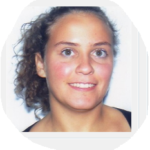Meet our researchers:
Alessandro Casnati received his PhD in Chemistry in 1992 at the University of Parma under the supervision of Prof. Rocco Ungaro. After a period of study in Prof. Reinhoudt’s laboratories at Twente University (NL), he came back to Parma University as Assistant Professor (1994). In 1998 he became Associate Professor and in 2015 Full Professor of Organic Chemistry. His interests are in Supramolecular Chemistry and in the design and synthesis of calixarene receptors for ions, small molecules and of multivalent ligands for macrobiomolecules.
Jeffrey D. Esko, is a Distinguished Professor of Cellular and Molecular Medicine and was a founding Director of the Glycobiology Research and Training Center at the University of California, San Diego. Dr. Esko received his Ph.D. in Biochemistry at the University of Wisconsin in Madison. After an independent fellowship at the Molecular Biology Institute at the University of California, Los Angeles, he moved to the University of Alabama at Birmingham in 1983 as an Assistant Professor and then as a full Professor to the Department of Cellular and Molecular Medicine at the University of California, San Diego in 1996 to help build a program in glycosciences. Work in his laboratory focuses on the structure, biosynthesis, and function of proteoglycans. Current work includes the application of genome-wide methods to identify novel genes involved in glycosaminoglycan assembly; studies focused on treatments for enzyme replacement therapy; studies of proteoglycans in viral and bacterial infection; and studies of proteoglycan-associated receptors with particular emphasis on the vasculature and infection.
Ilaria Morbioli graduated in Chemistry at University of Padua and received her PhD in 2017 under the supervision of Prof. Francesco Sansone working on multivalent calixarenes for the targeting of cell membrane receptors and intracellular cargo delivery. Since 2017 she has been working as researcher at Aptuit, an Evotec Company, which deals with the synthesis of small molecules having pharmacological activity.
Francesco Sansone received his PhD in 1998 in Organic and Supramolecular Chemistry at the University of Parma (Italy), under the supervision of Prof. Rocco Ungaro. Currently, he is Full Professor of Organic and Bioorganic Chemistry at the Department of Chemistry, Life Sciences and Environmental Sustainability, Parma University. With his activity, he significantly contributed to define for calixarenes the role of versatile scaffolds for the preparation of efficient multivalent ligands for biomacromolecules. His research interests are in the design of supramolecular systems for applications in the field of biology and biotechnologies, but also in technological contexts as additives for lubricants and for treatment of radioactive waste.
Yitzhak Tor carried out his doctorate work at the Weizmann Institute of Science earning his PhD in 1990. After a postdoctoral stay at the California Institute of Technology (1990–1993), he took his first faculty position at the University of Chicago. In 1994, he moved to the University of California, San Diego, where he is currently a Distinguished Professor of Chemistry and Biochemistry. He was the Teddy Traylor Scholar in Organic Chemistry (2006–2011) and the George W. and Carol A. Lattimer Professor (2013–2017). His research interests are diverse and include chemistry and biology of nucleosides, nucleotides and nucleic acids, the discovery of novel RNA-targeting antiviral and antibacterial agents, as well as the development of cellular delivery agents and biomolecular fluorescent probes.
What inspired your research in this area?
For some years we have been working on calixarene derivatives that show remarkable ability in delivering nucleic acids into cells thanks to their functionalization with guanidinium and arginine units. Among the functions put into play during the transfection process, these cationic macrocyclic amphiphiles facilitate the cell membrane penetration. Therefore, we decided to exploit this latter property of these macrocycles to improve the uptake of liposomes by cells, with the aim of overcoming some limitations characterizing the action of these lipidic carriers. Liposomes in fact frequently show poor penetration capability and this can significantly impair the beneficial and expected transport of drugs and biologically relevant species for which they are designed. On the other hand, liposomes can be rather simply adorned to gain new properties and functions. We planned thus to improve the liposomes performance by decorating their outer surface with our cationic calixarene-based carriers.
What do you personally feel is the most interesting/important outcome of your study?
I think it is important to have verified that the calixarene derivatives can significantly affect the activity of liposomes, improving their ability of delivering their cargo into the cells. The parallel use of cells lacking anionic polysaccharides on their surface and of plain liposomes (lacking the calixarenes in the outer layer) as references proved the active role played by the cationic macrocycles to trigger the uptake of the calixarene-modified vesicles. I hope these results can be useful to other researchers active in the field of drug delivery to explore the possible use of other similar clustered multivalent polycationic ligands to facilitate cell penetration.
What directions are you planning to take with your research in future? What are you going to be working on next?
Remaining within the context of this specific paper, we are going to work on supramolecular transporters/vectors able to deliver cargos in a targeted way, combining the already-established cell penetrating properties with additional tools such as, for instance, the recognition of specific cells by using antigens units. These latter units should provide the calixarenes with the ability of selectively interacting with specific receptors located only, or overexpressed, in particular tissues, cells and organs. To this end, the calixarene structure typically allows multiple functionalization generating multivalent or multifunctional systems, or even the combination of both natures. The chemistry to obtain such complex systems becomes step by step more challenging.
Read the full article: Calixarene-decorated liposomes for intracellular cargo delivery
See the other articles showcased in this month’s Editor’s Collection
See all the full articles on our publishing platform















